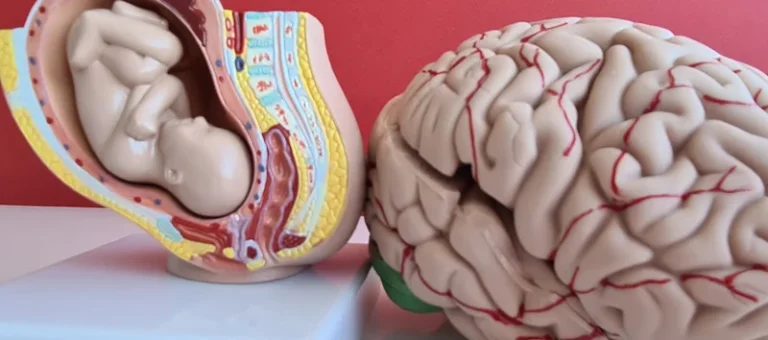
Vomiting often leads to fatigue and weakness, so your body needs time to recover. Once you’re feeling better, keep physical activity to a minimum. Overexerting yourself too soon can lead to further fatigue or even trigger another vomiting episode. As a doctor, it doesn’t make much difference to me if it’s green or yellow or contains spit or bile, as long as it doesn’t contain blood. The color doesn’t tell me what underlying condition you might have or what treatment you might need. People often use the terms nausea, vomiting, retching and dry heaving interchangeably.
Cannabinoid Hyperemesis Syndrome
- Symptoms are most common in early middle-aged adults who have used cannabis regularly since adolescence.
- Researchers need to study CHS in more detail to make it easier for doctors to recognize and treat the condition.
- Two case series and numerous individual case reports have been published on Cannabinoid Hyperemesis Syndrome (CHS) (Table 1).
- Additional pharmacological research is needed regarding the pro-emetic effects of additional cannabinoids and their metabolites.
- Tetrahydrocannabinol (THC) and cannabidiol (CBD) are the main cannabinoids in marijuana products.
Most were regular users of cannabis presenting with severe cyclic nausea and vomiting. Cannabinoid hyperemesis syndrome (CHS) is a condition that you might get if you've regularly smoked weed or used marijuana in some other form for a long time. CHS causes you to have repeated episodes of vomiting, severe nausea, stomach pain, and dehydration. You're more likely to get CHS if you use marijuana at least once a week and have been doing so since you were a teenager.
What can I do to prevent vomiting from recurring?
- If symptoms persist and you continue to use cannabis, you may experience more severe problems that require hospitalization for treatment.
- Keep in mind none of these treatments will be effective if you continue using cannabis products.
- Research suggests that CB1 receptors regulate the effects of marijuana on the gastrointestinal tract.
- Cannabinoid Hyperemesis Syndrome is a new and under recognized clinical entity.
Rates of cannabis use disorder have spiked in the past 40 to 50 years, D’Souza said, with some studies suggesting between 20 and 30 percent of marijuana users meeting the criteria for the disorder. Experts also aren’t clear on what causes CHS, or why some people develop it while others don’t. Since it was first identified in 2004 in Australia, researchers have looked at the effects of Twelve-step program cannabis on the vomiting centers of the brain. The pain is usually around the belly button and can get better with hot shower/baths.
PROCESS TO DEVELOP CHS TREATMENT GUIDELINE
Δ9-tetrahydrocannabinol (THC) is the principle active compound in cannabis (Figure 1). The metabolism of THC occurs mainly in the liver via oxidation and hydroxylation reactions. In humans this is carried out largely by the CYP2C isoenzyme cannabinoid hyperemesis syndrome subfamily of the cytochrome P450 complex 19.
The Effects of Cannabinoids in the Brain
The only proven way to prevent cannabis hyperemesis syndrome is to avoid cannabis (marijuana). People who use marijuana long-term — typically for about 10 to 12 years — are at risk of developing CHS. But not every person who uses marijuana, even long-term use, develops CHS. Investigators sought to create a consensus guideline for rapid identification and opioid-sparing treatment of patients with CHS. DNA tests promise to help your doctor personalize your mental health medications. An Ohio State psychiatrist explains why they should be used as only one tool among many.
Treatment
Other researchers theorize that the effects of marijuana can change with chronic use. With the consumption of marijuana increasing due to the legalization of its recreational use in many states, doctors may receive more reports of side effects from marijuana use. Research is ongoing on the exact way that cannabis triggers this problem. In the meantime, the best way to relieve CHS symptoms is to stop using the drug.
- Symptoms of CHS typically come on several years after the start of chronic marijuana use.
- Case reports have demonstrated a remission in CHS symptoms upon cessation of cannabis use for extended periods 6,51–54,57,59–62,68,71.
- As a somewhat new problem, CHS is often mistaken for other problems with the same symptoms.
- Receptors are specialized cells that respond to specific stimuli or changes in the environment.
- Ultimately, the treatment of any illness is the removal of precipitating factors, not merely the management of its symptoms.
- Because it requires many months of abstinence to diagnose CHS, some chronic cannabis users are reluctant to go down that path, experts say.
medical breakthroughs that gave us hope in 2024
Cannabinoid hyperemesis syndrome (CHS) is a very unpleasant — and potentially dangerous — complication of long-term marijuana use. Because of this possible complication, it’s important to use caution with marijuana and other cannabis products. If you think you have CHS or cannabis use disorder, talk to a healthcare provider. Cannabinoid hyperemesis syndrome (CHS) can affect people who use cannabis (marijuana) long-term.
However, symptoms almost always return if you resume using marijuana. Since its symptoms are easily confused with other conditions, it can take about one to two years before people who seek medical help with CHS get an accurate diagnosis. In one study of frequent cannabis users with potential CHS symptoms, 33% of participants met the definition of CHS. When expanded to the general U.S. population, research indicates that about 2.75 million Americans annually may experience CHS.
Cannabinoid Hyperemesis Syndrome Causes

Cannabis can be addictive, and people who stop using it can experience symptoms not unlike opioid or alcohol withdrawal, said Dr. Deepak Cyril D’Souza, director of the Yale Center for the Science of Cannabis and Cannabinoids. Other theories behind rising cases include the widespread legalization and cultural acceptance of cannabis, as well as the higher tetrahydrocannabinol (THC) content in modern marijuana, experts told the NewsHour. When Dr. Deepa Camenga began her career =https://ecosoberhouse.com/ about 20 years ago, she rarely if ever saw pediatric patients with CHS, she said.

Clinical Presentation, work up and differential diagnosis of Cannabinoid Hyperemesis Syndrome

Patients who fail to respond to antiemetic therapy are at high risk for dehydration and resulting in nutritional deficiencies. Other known complications of forceful and uncontrolled vomiting include aspiration and subsequent pneumonitis or aspiration pneumonia as well as injury to the esophageal wall such as Boerhaave's syndrome. The only way to stop CHS and its symptoms is to completely quit using cannabis.
No Comments.